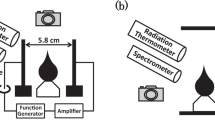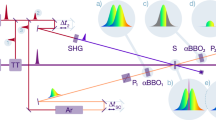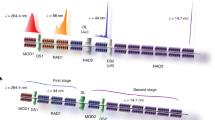Abstract
THE sodium-line reversal method of measuring temperature, commonly used for flames1, has been adapted to a study of the temperature distribution behind shock waves in a conventional shock tube. In the short times available, visual or photographic methods are impracticable but, with a photomultiplier and oscillograph, time-resolved records can be made. Using a direct-current ‘Pointolite’ lamp as background, we have measured temperatures in the range 2,000–2,900° K. for shocks through air, nitrogen and oxygen. By studying the records at various background temperatures, the temperature of the shock-heated gases could be determined within about ± 20°, or better than 1 per cent. An extension to higher temperatures appears possible by using arc sources as background.
This is a preview of subscription content, access via your institution
Access options
Subscribe to this journal
Receive 51 print issues and online access
$199.00 per year
only $3.90 per issue
Buy this article
- Purchase on Springer Link
- Instant access to full article PDF
Prices may be subject to local taxes which are calculated during checkout
Similar content being viewed by others
References
Gaydon, A. G., and Wolfhard, H. G., “Flames, their Structure, Radiation and Temperature” (Chapman and Hall, London, 1953).
Glass, I. I., Martin, W., and Patterson, G. N., “A Theoretical and Experimental Study of the Shock Tube”, U.T.I.A. Report No. 2 (1953).
Author information
Authors and Affiliations
Rights and permissions
About this article
Cite this article
CLOUSTON, J., GAYDON, A. & GLASS, I. Temperature Measurements of Shock Waves by the Spectrum-Line Reversal Method. Nature 181, 1325–1326 (1958). https://doi.org/10.1038/1811325a0
Issue Date:
DOI: https://doi.org/10.1038/1811325a0
Comments
By submitting a comment you agree to abide by our Terms and Community Guidelines. If you find something abusive or that does not comply with our terms or guidelines please flag it as inappropriate.



